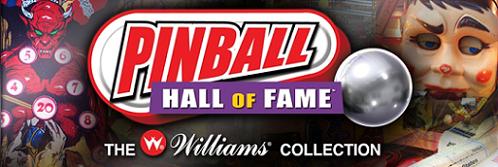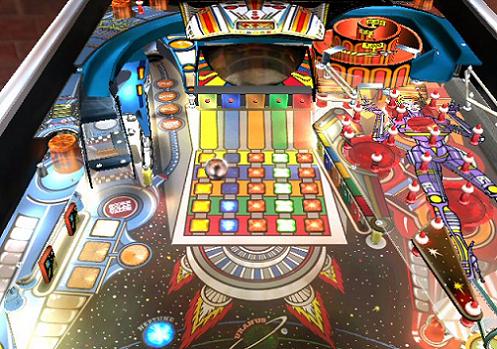Done Playing – Pinball Hall of Fame, The Williams Collection

There’s two things I really love when it comes to entertainment. I loves me some videogames, and I loves me some pinball. Crave Entertainment‘s latest digital pinball release, Pinball Hall of Fame – The Williams Collection, combines both of these things excellently. Released earlier this year to no fanfare and with virtually no advertising, this game almost slipped under my radar unnoticed. What a shame it would have been to miss out on, as this has become one of my most played Wii games to date.

When it comes to digital pinball games, there are two varieties. There’s the anything goes type like Alien Crush, Devil’s Crush, and Metroid Prime Pinball, where the designers have taken full advantage of the fact that anything can be made to happen in a videogame (boss battles, anyone?). Then there’s the realistic type of pinball. The type that tries to simulate real pinball machines. This game is the latter type. It is a simulation of 10 classic Williams pinball machines. Being that it’s a simulation of real world pinball machines, there are only three criteria that need to be met: Do the graphics look real? Does it sound authentic? Are the physics accurate? The answer to all three questions is a resounding YES.
More so than any other electronic pinball game I’ve ever played, the graphics, sound, and physics are so close to the real thing that you may lose yourself within the game and forget that you’re not playing on a real pinball machine. The only negative thing about the graphics are the fact that they’re not rendering in high def. The jaggy edges remind you that you’re not gaming on a 360 or PS3, but once the ball starts bouncing around, you quickly stop noticing.

There are 10 pinball tables, ranging from 1970 to 1990. The oldest table, Jive Time (1970), seems to have been included only for the sake of seeing how far we came in just a couple of decades. The tables range from that simple time, up to the creepy, yet complex Funhouse (1990). I found that all of the tables are fun to play, and represent a good anthology of Williams in their golden age. A few tables stand out as particularly noteworthy, such as the infamous Pinbot (1986) and Black Knight (1980).
The game is available for the Wii, PS2, and PSP. The PSP version has noticeably muddier textures, while the PS2 version is missing a couple of tables. The Wii version is the one to get. In addition to the extra tables and slightly improved graphics, the controls work best on that system. The game is controlled with the Wii remote in one hand, and the nunchuk in the other. This allows you to set the controllers apart, making it seem more like you’re at an actual pinball machine. An added benefit is that you can shake either controller to shake the table. The rumble, weak though it is in the Wii remote, adds to the illusion as well.

If you have $20 to spare, and used to enjoy this virtually extinct form of entertainment, you owe it to yourself to pick this game up. This is the best pinball anthology released to date. The only alternative is to find an actual pinball hall of fame (there’s one in Vegas), or spend hundreds to buy a single machine off of ebay. $20 for 10 machines that will never need maintenance is a bargain. I highly recommend this game.













